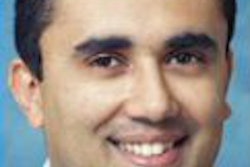The armed forces are one of the largest consumers of radiology. Col M.N. Sree Ram makes a case for why the armed forces or any hospital should opt for PACS or filmless radiology.
Radiology has traditionally been considered inseparable from "films", classically in the form of x-ray plates, but gradually also including films incorporating images from ultrasonography (US), computed tomography (CT), and magnetic resonance imaging (MRI) examinations. Talk of "filmless radiology" may therefore appear anachronistic. But the future beckons a world in which the practice of radiology may completely do away with the traditional use of films.
The seeds of filmless radiology were laid with the advent of modalities such as MRI and CT, which were inherently computer-intensive for both acquiring and presenting clinically relevant images. Since images from the newer modalities such as CT and MRI were basically in a digital format, they could be treated in the same manner as any other digital data. They could be viewed on computer monitors with the added advantage of a variety of postprocessing tools to alter or analyze the images. They could be stored in digital format, either on the hard disk of the computer or on removable media, such as floppies, CDs, etc., for efficient transport. They could also be transported electronically on a network of computers.
However, the traditional habit of viewing all images on films required that the images also be printed on films whether for reporting by the radiologist, for review by the clinician, or for long-term archival. With the ever-increasing inclusion of computer usage in the medical field and specifically in radiology, this traditional concept was beginning to be questioned. Thus was born the concept of picture archival and communication system (PACS).
PACS comprises a network of computers, which includes the modality computers, additional computers such as readily available personal computers (PCs) or advanced servers, remote viewing stations, and peripherals such as printers and storage devices that can seamlessly communicate with each other and exchange data just as in any other computer network. By establishing such a network, images from a multitude of modalities can be brought together on a single platform; transferred on a local area network, a wide area network, or even on the Internet; viewed independently at multiple nodes in the radiology department and at select viewing stations in OPDs and wards; be archived in electronic form; and retrieved with minimum effort.
If the patient’s entire medical records are also simultaneously available on such a network, then the system lends itself to a level of efficiency that cannot be achieved with conventional methods of recording data and images, viz manual record keeping and film-based imaging.
The biggest stumbling block in switching from a film-based radiology department to a filmless one is the fact that conventional radiography still comprises more than three-fourths the workload of any full-fledged department. With such a large proportion of a department’s output outside the ambit of computers, it would be impractical to run a department in which both filmed and filmless images are concurrently used.
The true benefit of PACS can be realized only when all images coming out of a radiology department are available on such a system. Initial efforts to have conventional x-ray images in digital format were directed toward capturing them using digital cameras or film scanners, and storing them as an image file. This, however, only resulted in duplication of work and, more importantly, deterioration in the quality of images thus converted.
The advent of computed radiography (CR) and digital radiography (DR), which can directly acquire radiographs in the digital format, gave the final push for the introduction of filmless radiology as a viable proposition. CR and DR offer the added advantage that they afford wider latitude in the exposure factors required to get a diagnostic-quality image, which translates into fewer repeat exposures and less radiation dose.
A pertinent question is whether filmless radiology is a practical idea for hospitals in the armed forces. Hospitals worldwide that have already implemented a comprehensive PACS, which includes CR or DR as part of the network, report the following advantages of the system:
- Direct savings on the recurring cost of film and processing chemicals, as well as on the logistics of storage and transport of both unexposed and archival film.
- Faster turnaround time in OPDs and wards since clinical diagnosis is reached earlier with the ready availability of images on remote viewing stations and the added advantage of immediate comparison of a chronological series of archived images during follow-up of a patient.
- Reduction in the number of repeat exposures due to technical faults and the number of lost or damaged films from as high as 20% to less than 1%.
- Ease of storage and subsequent retrieval of diagnostic images whether for future follow-up, or for teaching and research purposes.
- When combined with a radiology information system (RIS) or hospital information system (HIS), which are computerized systems for patient registration at a departmental or hospital level, PACS precludes duplication of registration formalities when a patient undergoes multiple diagnostic examinations during one visit.
This can be extended to other services such as OPDs, laboratory examinations, and medical inventory management.
Hospitals in the armed forces offer certain organizational advantages for the implementation of filmless radiology. These include:
- Every patient (serving, ex-serviceman, or dependent) can be identified uniquely by the service number.
- An existing manual system of archival of medical records, including diagnostic images for purposes of future review/recategorization, is amenable to computerization.
- The ongoing implementation of integrated vertical hospital projects has all services under one roof, which is ideal for networking.
- A pool of fairly educated paramedical personnel can be trained to work in a "filmless" environment.
- The ready availability of connectivity within the armed forces, by virtue of captive telecommunication systems on which data and even images can be seamlessly transferred, precludes the need for physical transfer of bulky patient-related documents.
- A general environment that is presently supportive of computerization of all facets of the functioning of the forces has the availability of a support structure for technical inputs and maintenance.
There are, however, certain issues that need to be considered before implementation of a filmless environment. These include:
- The cost of hardware, such as:
- Conversion of existing conventional radiography systems to CR or DR.
- Cost of computers, servers, and remote viewing stations.
- Cost of networking within a hospital.
- Medical images are now viewed in an internationally accepted format called digital imaging and communications in medicine (DICOM). Specialized software is required to integrate these with existing computers on a network. These are, however, easily available.
- Training of personnel in the use of such a system.
- The requirement and cost of employing or consulting specialist personnel such as computer engineers.
- The cost of equipment maintenance. The system needs to be functional year-round since there will be no conventional backup system once a full-fledged filmless environment is embraced.
Technology is providing us with newer ways of performing conventional jobs in a more efficient manner, and it is for our organization to decide whether we would like to be a part of this change that is sweeping the world of medicine gradually. It is time the debate on the introduction of filmless radiology is discussed in various fora in the armed forces. In the ultimate analysis, if you can manage your "images" on a computerized network, then all other data can be easily managed.
By Col M.N. Sree Ram
AuntMinnieIndia.com contributing writer
September 7, 2004
Republished with permission from the Medical Journal Armed Forces India. Col M.N. Sree Ram, MD, is professor and head, department of radiodiagnosis and imaging, Armed Forces Medical College, Pune.
Copyright © 2004 Director General Armed Forces Medical Services


















